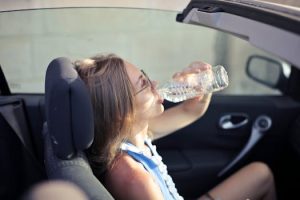Crash Test Ratings: How New Cars Are Evaluated
When it comes to buying a new car, safety is often a top priority for consumers. We want to feel confident that we’re protected in the event of a crash, and one of the key ways we gather this information is through the crash test ratings of different vehicles. But just how are these ratings determined? In this article, we’ll take a closer look at the process of evaluating new cars and how those ratings impact our purchasing decisions.
The History of Crash Test Ratings
In the early days of automobile manufacturing, there were few regulations in place to ensure the safety of vehicles on the road. It wasn’t until the late 1930s that some basic safety standards were established, but it wasn’t until the 1970s that crash testing began in the United States. The National Highway Traffic Safety Administration (NHTSA) was tasked with developing and implementing a comprehensive crash testing program, which eventually led to the creation of the 5-star safety rating system in the late 1980s.
The 5-Star Safety Rating System
The NHTSA’s 5-star safety rating system is the most widely recognized and used crash test rating system in the United States. It evaluates the safety of vehicles in several different crash scenarios, including front, side, and rollover crashes. Each vehicle is given an overall rating from one to five stars, with five stars being the highest and safest rating. This provides consumers with a quick and easy way to compare the safety of different vehicles.
Types of Crash Tests
Frontal Crash Tests
In a frontal crash test, the vehicle is propelled into a fixed barrier at a speed of 35 miles per hour. This simulates a head-on collision with another vehicle or a stationary object. The vehicle is equipped with dummies that measure the impact on the driver and front passenger, as well as the vehicle’s structural integrity.
Side Crash Tests
Side crash tests are designed to simulate a T-bone or broadside collision at an intersection. The vehicle is struck on the driver’s side by a moving barrier at 38.5 miles per hour. Dummies are again used to measure the impact on the driver and passenger, as well as the effectiveness of the vehicle’s side airbags.
Rollover Tests
Rollover tests evaluate the vehicle’s resistance to rollover in both a single-vehicle crash and a side impact collision. In the single-vehicle test, the vehicle is put through a series of maneuvers to determine its rollover risk. In the side impact test, the vehicle is struck on the side by a moving barrier to assess its resistance to rollover in a T-bone collision.
How Ratings are Calculated
Crash test ratings are determined by measuring the severity of the injuries sustained by the test dummies during each type of crash test. These injuries are then assigned a numerical value, with lower numbers indicating less severe injuries and higher numbers indicating more severe injuries. These values are then converted into a star rating using a complex formula that considers factors such as injury likelihood, vehicle structure, and safety features.
Why Ratings are Important
Crash test ratings are important for several reasons. For starters, they provide consumers with a standardized way to compare the safety of different vehicles. They also hold automakers accountable for the safety of their vehicles, as a poor rating can result in negative publicity and a decrease in sales. Additionally, these ratings have played a role in the development and improvement of safety features in vehicles over the years. As consumers demand safer vehicles, manufacturers have had to rise to the challenge to remain competitive.
In Conclusion
The crash test ratings of new cars play a crucial role in helping consumers make informed decisions about which vehicle to purchase. From the historical development of these ratings to the types of tests used and how ratings are calculated, understanding this process can ultimately lead to choosing a vehicle that will keep you and your loved ones safe on the road.









